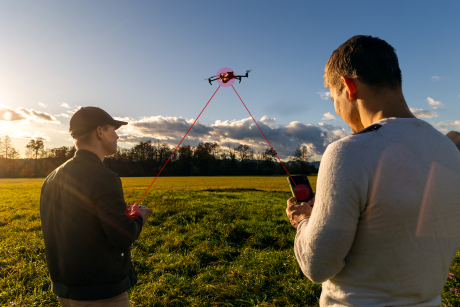From 1st of January 2024, the full applicable requirements for drone operations in the Open category will enter into force. This article highlights what these new requirements are to help drone operators understand the changes as easily as possible.
Drone Class Marks and Subcategories in the Open Category
The Open category is divided in three subcategories, A1, A2 and A3, which allow for different types of operations and have different requirements based on the risk posed by those operations.
Until 31st of December 2023, drones can be flown in the open category as follows:
- Subcategory A1: drones up to 500 g;
- Subcategory A2: drones up to 2 kg;
- Subcategory A3: drones up to 25 kg.
These weight limitations were put in place as a transitory measure before the entry into force of the full Open category, until drones fully compliant with the technical requirements defined by the new regulation would be available on the market. For a number of months it is possible to purchase drones with a class mark, fully compliant with the drone regulation - a list of them is available on this page. When using these drones some limitations are removed and the full potential of the open category can be exploited. If you have already purchased a drone with class mark, then you can already fly it according to the following limitations:

You can visit our open category webpage for more insights on the new requirements, and you may find out more about the different drone classes and what this means for you and the drone you want to fly via the drone information notices page.
Starting from 1st of January 2024, drones put on the market before January 1st, 2024 (legacy drones) without a class mark may still be operated in the A1 or A3 subcategories based on their mass.
Requirement for drone remote ID
 Also, from 1st of January 2024 all drones marked C1, C2 and C3 and those operated in the specific category below 120m, will be required to operate with an active and updated remote identification (Remote ID). Drones marked C1, C2 and C3 will be sold already equipped with a remote identification system, which will locally broadcast the information related to the UA, such as the drone’s position and the operator registration number. This is done for security reasons and to allow to easily identify drones which may not be flying in compliance with the applicable rules. Also legacy drones (unless they are lighter than 250 g) are recommended to be equipped with a remote ID. If not already embedded in the drone, a remote ID module that fulfill the requirements of the drones regulation may be purchased and attached to the drone. On the open category page you will find a list of modules already available on the market.
Also, from 1st of January 2024 all drones marked C1, C2 and C3 and those operated in the specific category below 120m, will be required to operate with an active and updated remote identification (Remote ID). Drones marked C1, C2 and C3 will be sold already equipped with a remote identification system, which will locally broadcast the information related to the UA, such as the drone’s position and the operator registration number. This is done for security reasons and to allow to easily identify drones which may not be flying in compliance with the applicable rules. Also legacy drones (unless they are lighter than 250 g) are recommended to be equipped with a remote ID. If not already embedded in the drone, a remote ID module that fulfill the requirements of the drones regulation may be purchased and attached to the drone. On the open category page you will find a list of modules already available on the market.
How can I operate a drone that was placed on the market before 31 December 2023 and without having a class identification label?
According to the EU Regulation 2019/947, from 1 January 2024, you can fly a drone without a class identification label if you operate in the open category in:
- Subcategory A1: if the drone has a maximum take-off mass of less than 250 g, including its payload;
- Subcategory A3: if the drone has a maximum take-off mass of less than 25 kg, including its fuel and payload.
Only for drones with a class mark, manufacturers have the responsibility for declaring the maximum take-off mass of the drone. This means that, when using a drone without a class identification label the maximum take off mass is not available. In this case the remote pilot has the possibility to weight the drone before the flight and make sure it is within the above limits.
The information contained in this article is meant purely as a summary of the Drone Regulations. It has no legal effect and shall not be construed as the official guidance of the Agency in accordance with Article 76 of Regulation (EU) 2018/1139. The Union's institutions and the Agency do not assume any liability for its contents. The authentic versions of the relevant acts, including their preambles, are those published in the Official Journal of the European Union and available in EUR-Lex.
Before you start drone operations
Finally, before starting your operations, remember to register as a drone operator, affix on the drone your UAS operator registration number and upload it on the remote id of your drone if it is equipped with it. Moreover, obtain your remote pilot qualification and check if there are any geo-zone in the area where you want to fly, you may find more information in this regard on the Flying in your country - National Aviation Authorities page.
